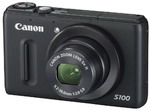Tuesday, June 29, 2004
How Big Can You Print That Image? PPI Explained
Posted by Jason Dunn in "THOUGHT" @ 10:15 AM
"I have an image I'd like to have printed. It's 2272 pixels by 1704 pixels at 180dpi. How big can I get this printed before it starts looking bad?"
First off, what is PPI you might ask? It stands for "pixels per inch". PPI is a physical measurement of how many dots are printed on a piece of paper. Ignore what you know about DPI and screen resolution - PPI is a measurement of the physical world, where digital pixels get transformed into physical dots on the page. The basic concept is this: the more pixels you can have per square inch on your page, the better the quality of your print will be.
The Painting Analogy...
Here's an analogy that might help this concept make sense: let's say you have one gallon of paint. If you have a wall that's 10 feet high and ten feet wide, you can give that wall several coats of paint and it will look great - full, lush, rich colour. But if you had to paint a wall that was 100 feet high and 100 feet wide, you'd have to spread your paint very thin to cover it all - the net result would be a poor quality paint job. The concept is exactly the same when it comes to printing your digital images. If you take a low resolution (640 x 480) image without many pixels (paint) and print it at a 3" x 2" wallet size (small wall), the quality will be acceptable. But if you took that same 640 x 480 image and tried to do an 8" x 10" print (a big wall), the quality would be poor because there's not enough pixels (paint) to cover it properly.
How Many Pixels Per Inch Do You Need?
You can't have a PPI value until you know what size of paper you're printing it on - all you have is the resolution (total number of pixels). PPI is an unknown until you pick a physical print size.
In the scenario above, ctmagnus has 3.8 megapixels worth of image data (2272 x 1704 = 3,871,488). If you have a program such as Picasa, it will give you the PPI value for each print size that you choose, and warn you when the PPI value is low. 300 PPI is ideal - anything above that is overkill. I was surprised to find, however, that I could go all the way down to 100 ppi on my 8.5" x 11" sample print image and it still looked quite good at 8.5 x 11 when viewed from a normal distance (holding the image at chest-height). At 50 PPI I could see significant image degradation. This will vary from image to image, and perhaps from printer to printer (I used a Canon i950 for my images), but 100 PPI is the "danger zone" that you don't want to go below. Some might argue that 150 PPI is the line never to cross - it depends on the eyes of the person looking at the image, and how closely they inspect it for flaws).
How To Calculate PPI
I taught a college class on PPI and printing a few weeks ago, and I spent some time working out the math (with the help of Ed Hansberry). How do you calculate PPI? There's the quick way and the painful way.
The quick way is to take the largest pixel value on the image (in this case, 2272) and divide it by the longest print side of the page size you're going to print it on. So if you were printing an 8" x 10", you'd divide 2272 by 10 and get 227 PPI. No quality problems with that PPI! At 11" x 14" you'd have 162 PPI. Still ok there, and at 16" x 20" you'd be at 113 PPI. This is pushing the barrier of acceptable quality, but I think it would still look decent - especially since the larger the image the further away people tend to view it.
So what's the painful way of calculating PPI? If you're a math person, you won't find this painful, but I'm not, so I did find it moderately painful. :wink: The formula for the data above would look like this: (2272 x 1704) / (8.5 x 11) = x. In this instance, we'd get 41,406 and change. We'd then take the square root of that number and get a PPI value of 203. This is the most accurate method of calculating PPI (the quick method above gave us 227 PPI), but it's more involved. If your software gives you the PPI value, all the better, but if it doesn't you can safely use the quick method to crank out a PPI value before you waste valuable ink and paper.
And there you have it. Go out and conquer the digital photo printing world with your new-found knowledge of PPI! :way to go:












